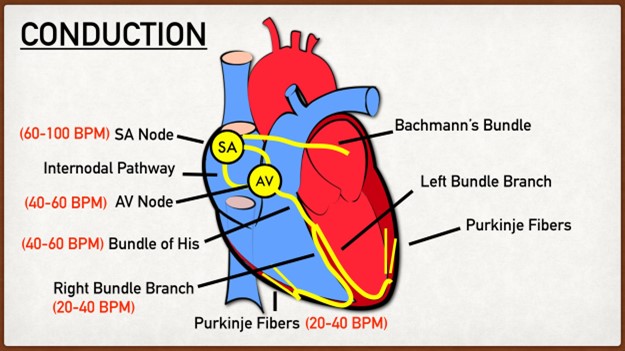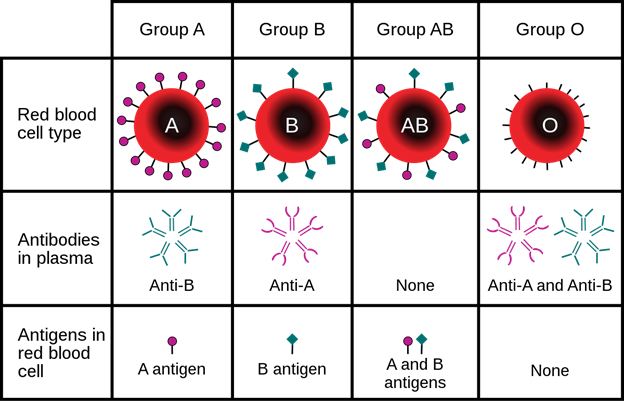The correct sequence of parts that carry cardiac impulses is:
AV node, SA node, Purkinje fibers, AV bundle.
SA node, Purkinje fibers, AV node, AV bundle.
SA node, AV node, AV bundle, Purkinje fibers.
AV node, AV bundle, Purkinje fibers, SA node.
The Correct Answer is C

This sequence ensures that the atria contract before the ventricles and that the ventricles contract from the bottom up.
Choice A is wrong because it reverses the order of the SA node and the AV node. The SA node is the pacemaker of the heart and initiates the cardiac impulses.
Choice B is wrong because it places the Purkinje fibers before the AV node.
The Purkinje fibers are the last part of the conduction system and stimulate the ventricular muscle fibers.
Choice D is wrong because it reverses the order of the entire sequence.
The AV node is not the pacemaker of the heart and does not initiate cardiac impulses.
Nursing Test Bank
Naxlex Comprehensive Predictor Exams
Related Questions
Correct Answer is D
Explanation
This is because blood type AB has both A and B antigens on the surface of red blood cells.

Antigens are protein molecules that can trigger an immune response if they are foreign to the body.
Choice A is wrong because antigen B only is present in blood type B.
Choice B is wrong because neither antigens A nor B are present in blood type O.
Choice C is wrong because antigen A only is present in blood type A.
Normal ranges for blood types vary by population, but according to the NHS, about 3% of people in the UK have blood type AB.
Correct Answer is A
Explanation
This is because ventricular systole is the phase of the cardiac cycle when the ventricles contract and pump blood into the arteries.
The blood pressure in the arteries is greatest during this phase because of the forceful ejection of blood.
Choice B.
Atrial diastole is wrong because atrial diastole is the phase of the cardiac cycle when the atria relax and fill with blood from the veins.
The blood pressure in the arteries is lowest during this phase because the ventricles are also relaxed and not pumping blood.
Choice C.
Ventricular diastole is wrong because ventricular diastole is the phase of the cardiac cycle when the ventricles relax and fill with blood from the atria.
The blood pressure in the arteries is low during this phase because the ventricles are not pumping blood.
Choice D.
Atrial systole is wrong because atrial systole is the phase of the cardiac cycle when the atria contract and push blood into the ventricles.
The blood pressure in the arteries is not affected by this phase because the ventricles are still relaxed and not pumping blood.
The normal range for systolic blood pressure is less than 120 mm Hg and for diastolic blood pressure is less than 80 mm Hg.
Whether you are a student looking to ace your exams or a practicing nurse seeking to enhance your expertise , our nursing education contents will empower you with the confidence and competence to make a difference in the lives of patients and become a respected leader in the healthcare field.
Visit Naxlex, invest in your future and unlock endless possibilities with our unparalleled nursing education contents today
Report Wrong Answer on the Current Question
Do you disagree with the answer? If yes, what is your expected answer? Explain.
Kindly be descriptive with the issue you are facing.
